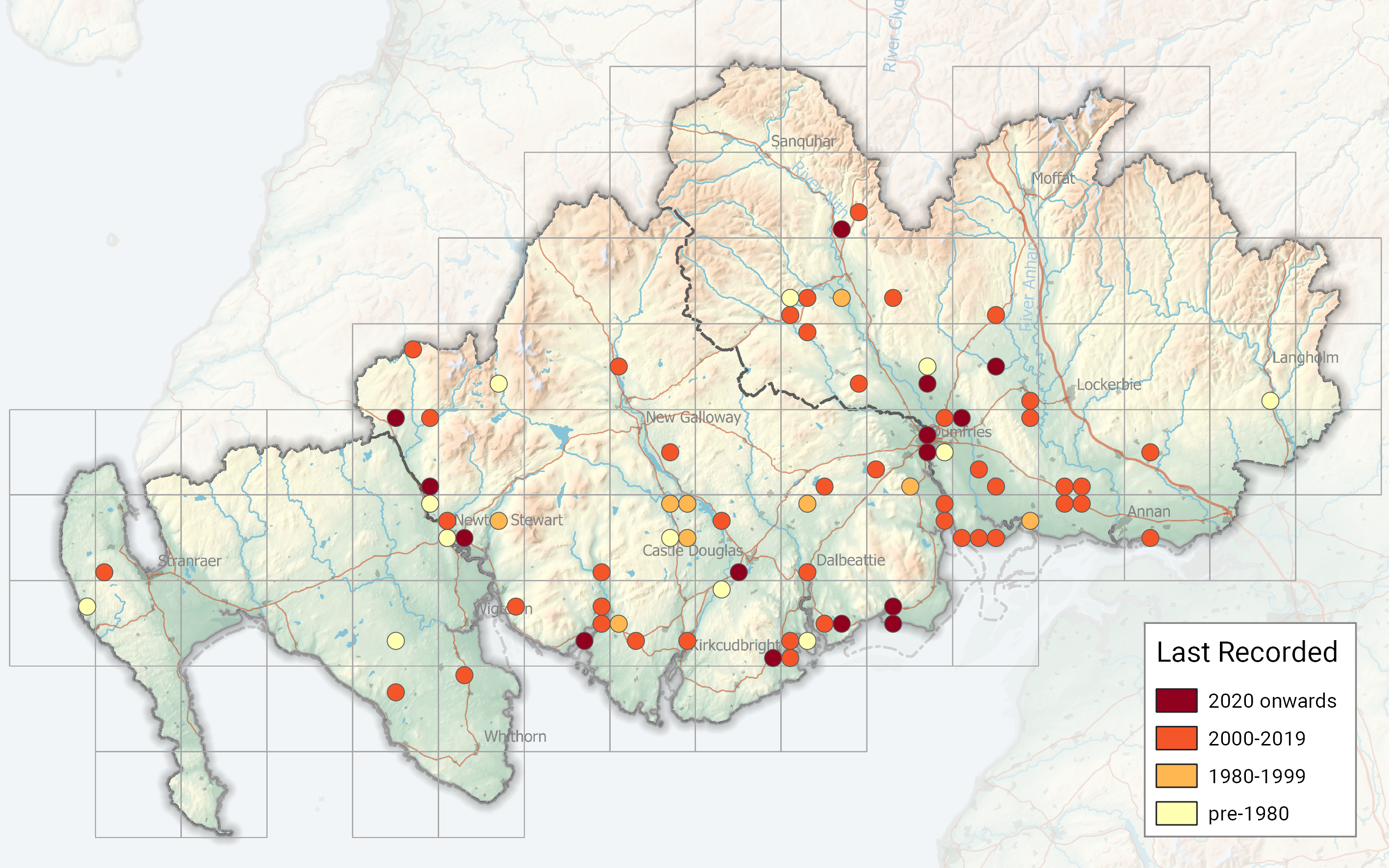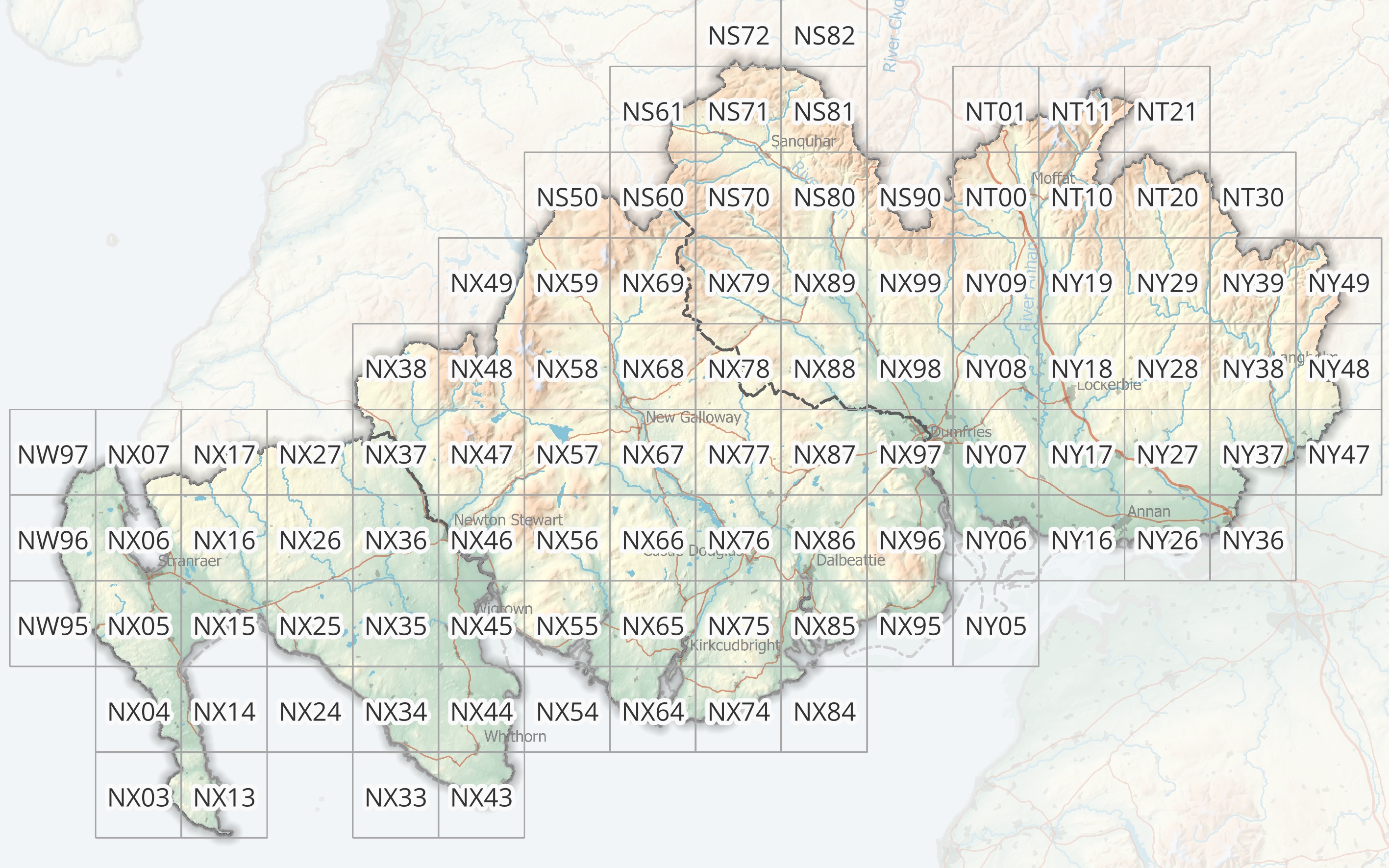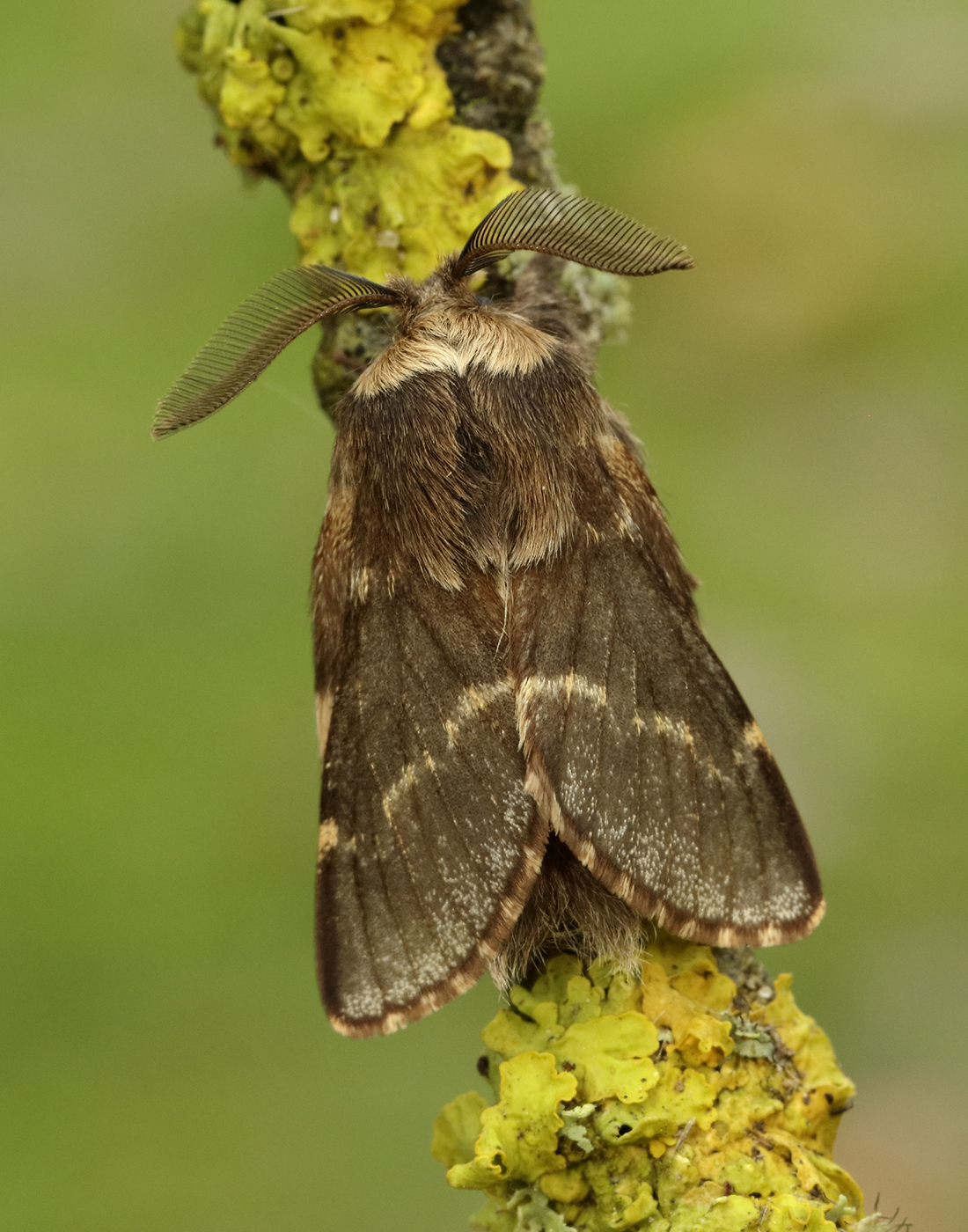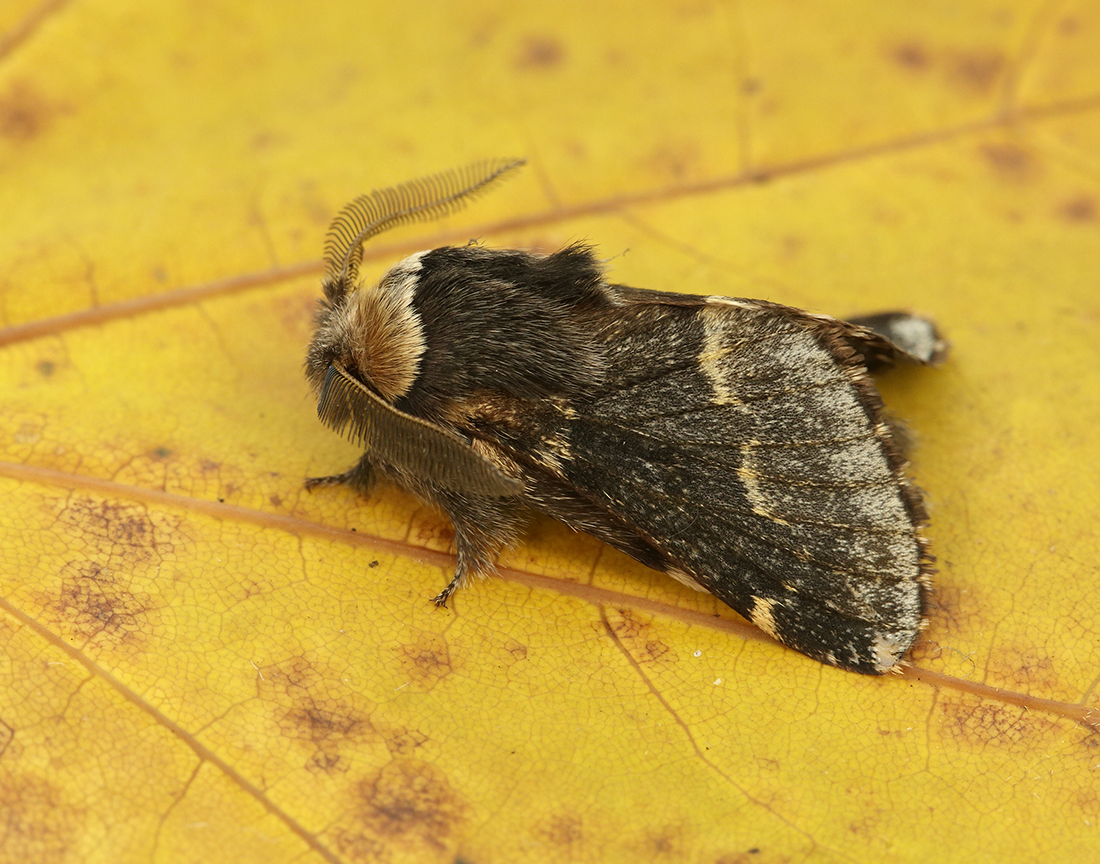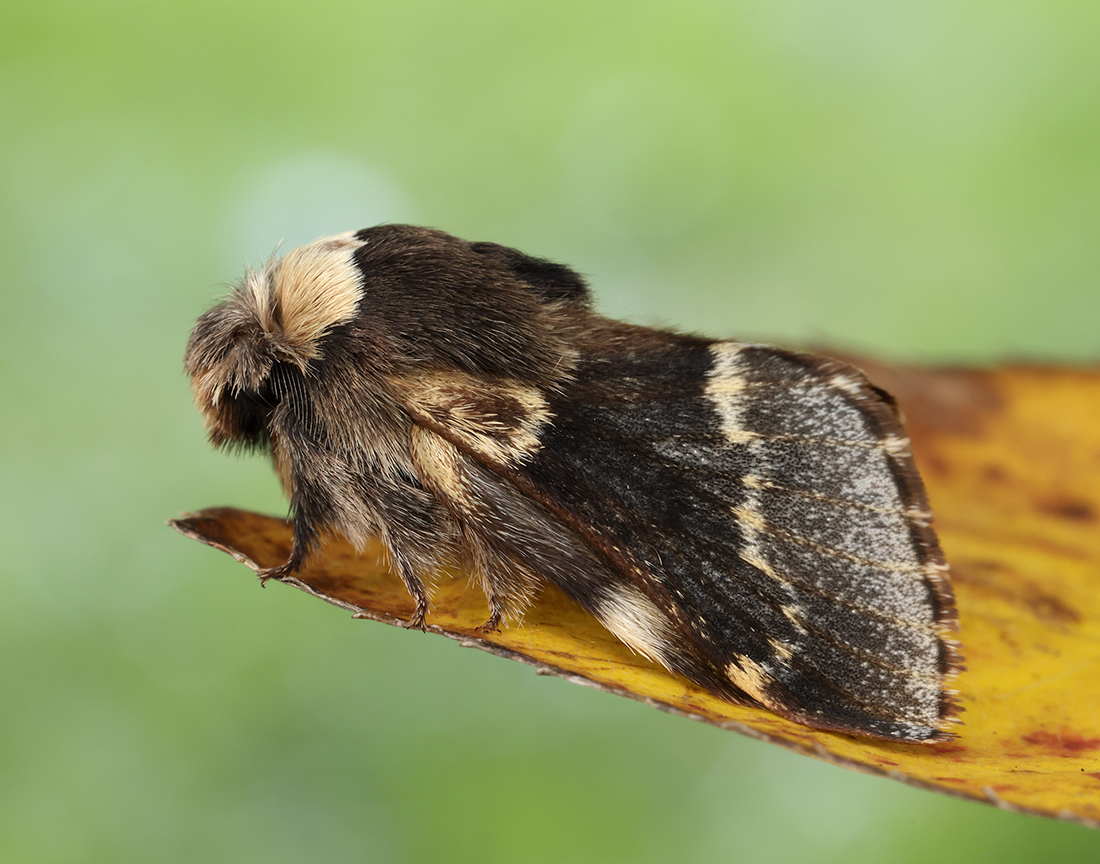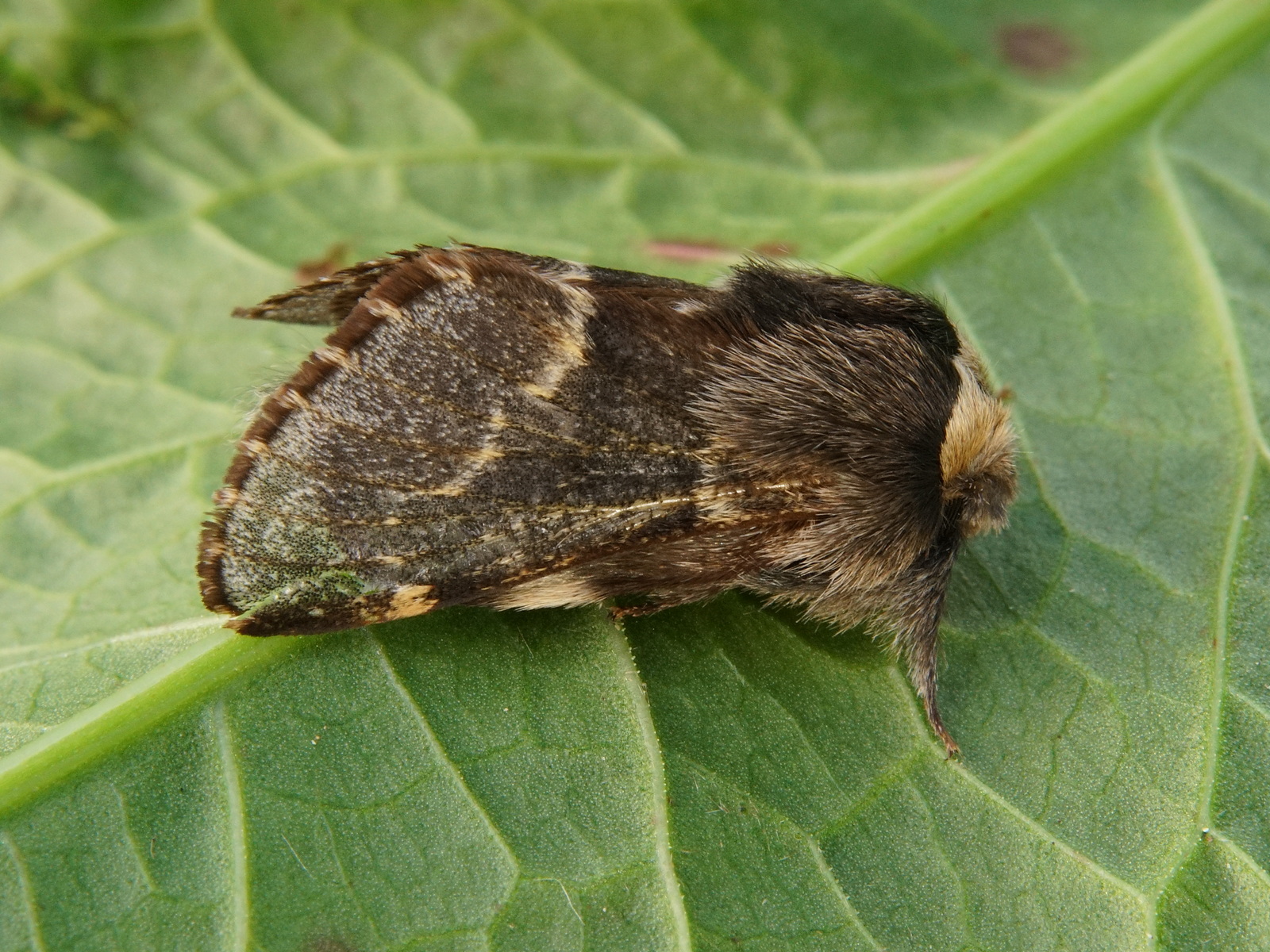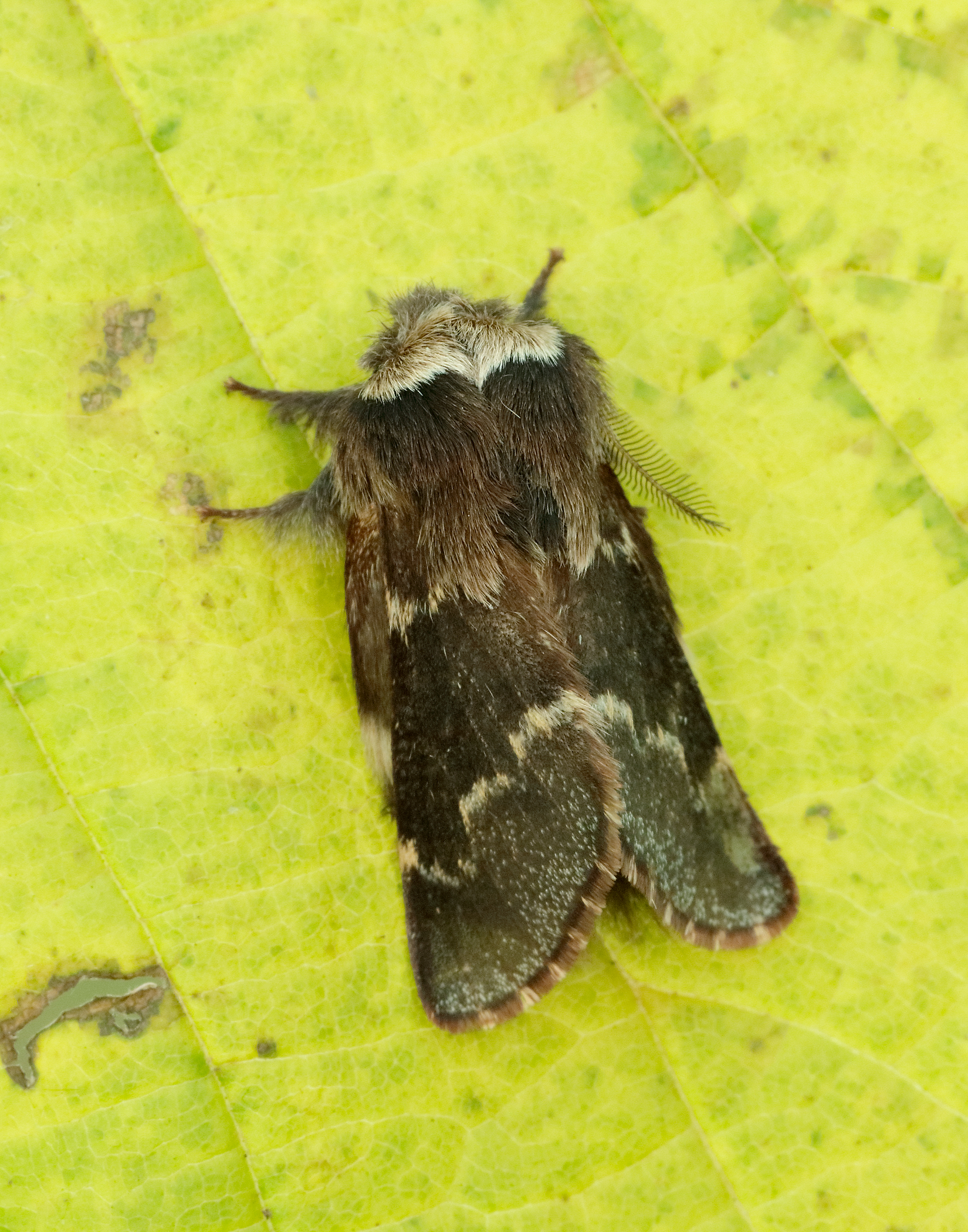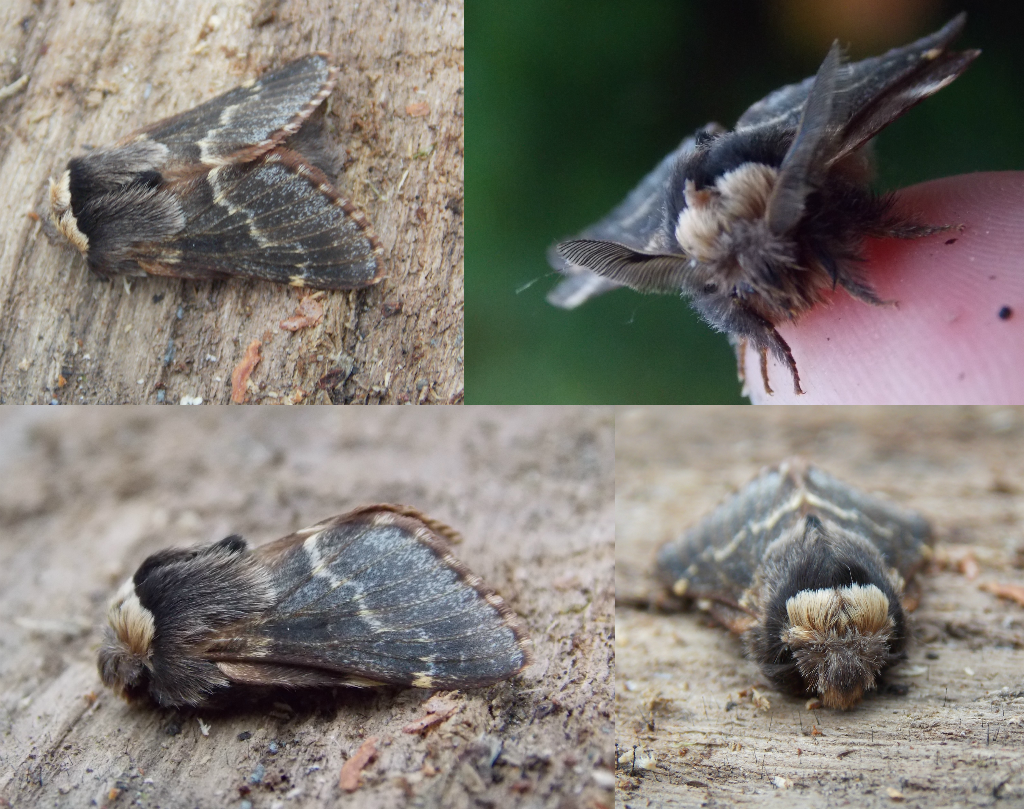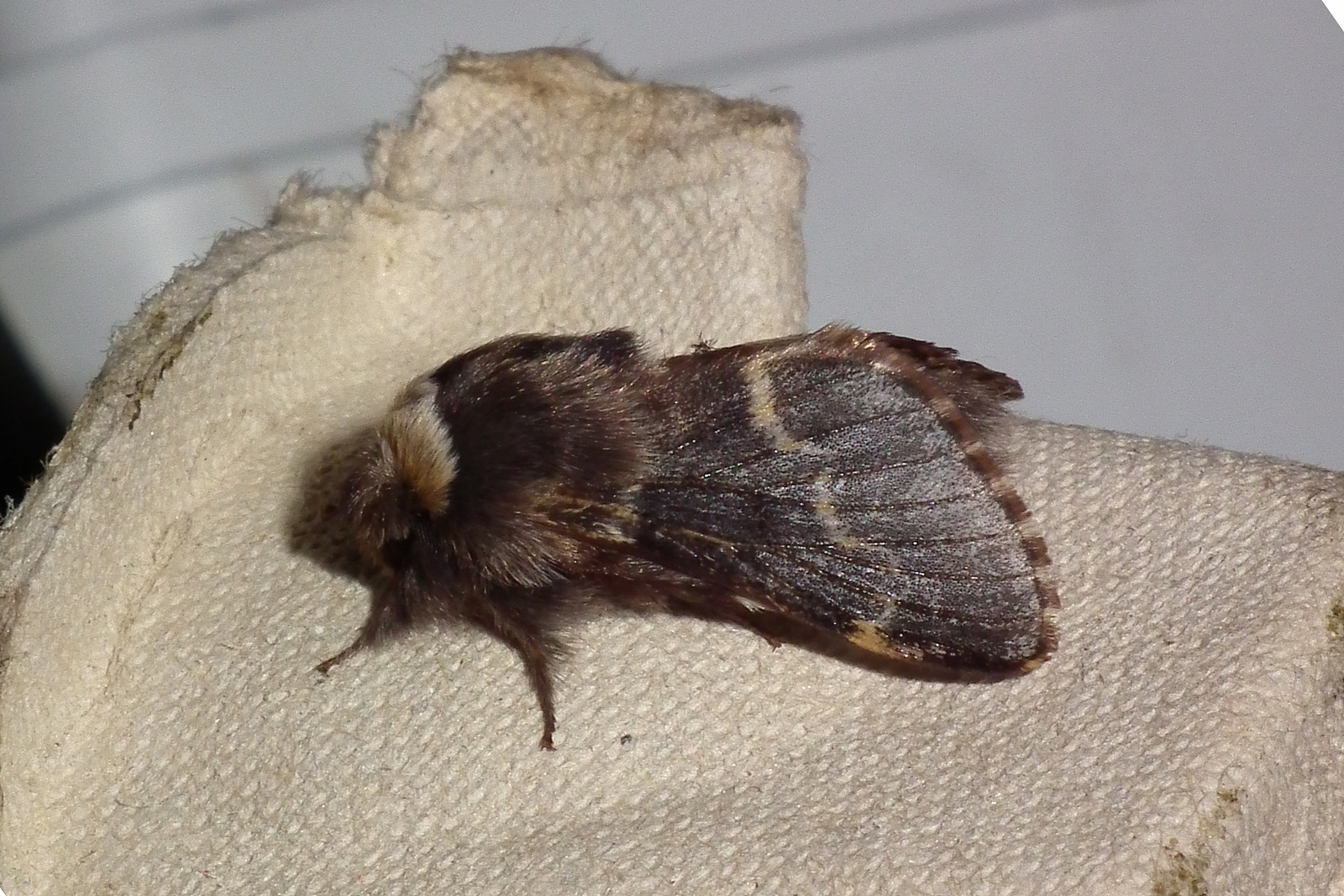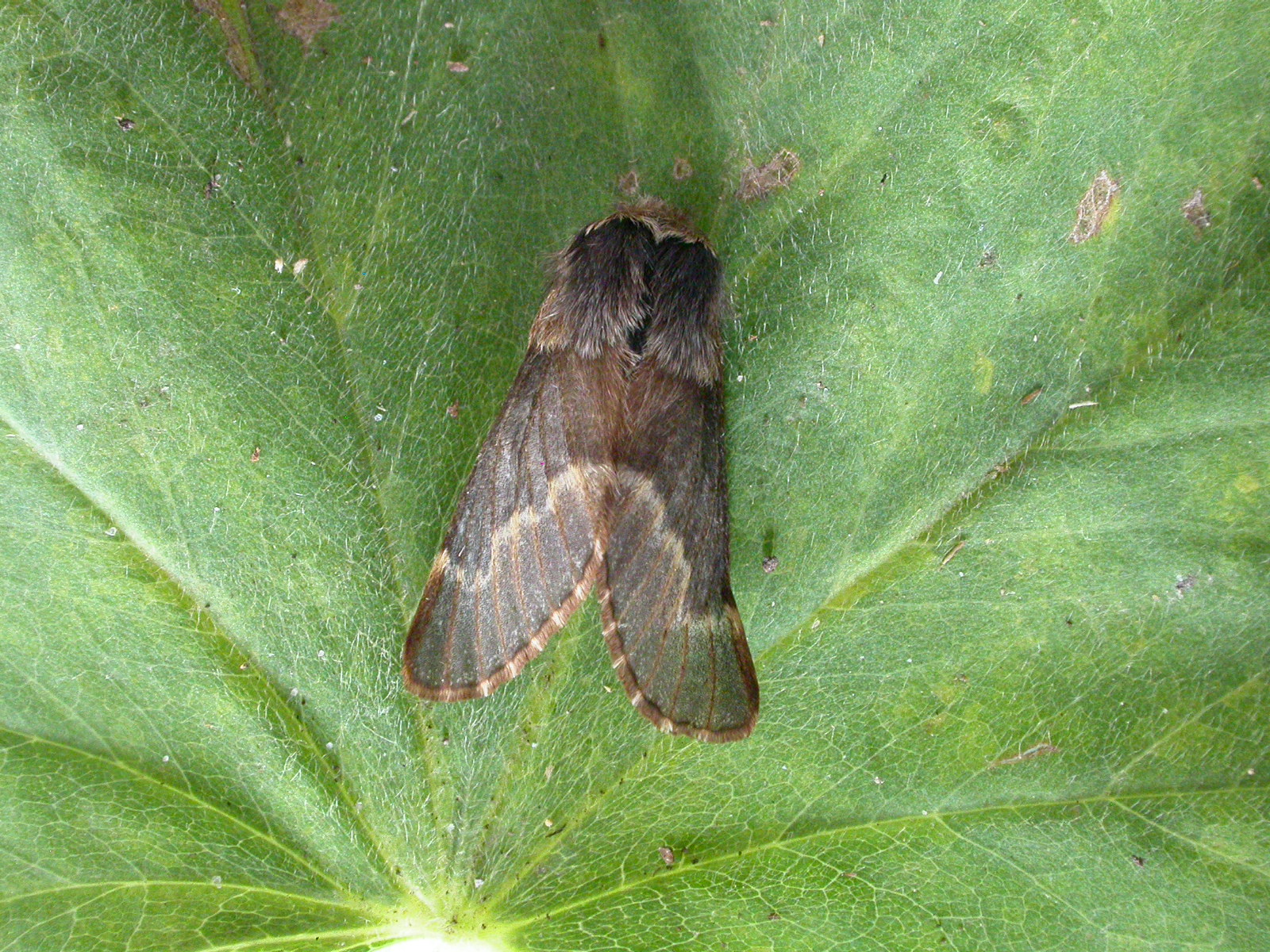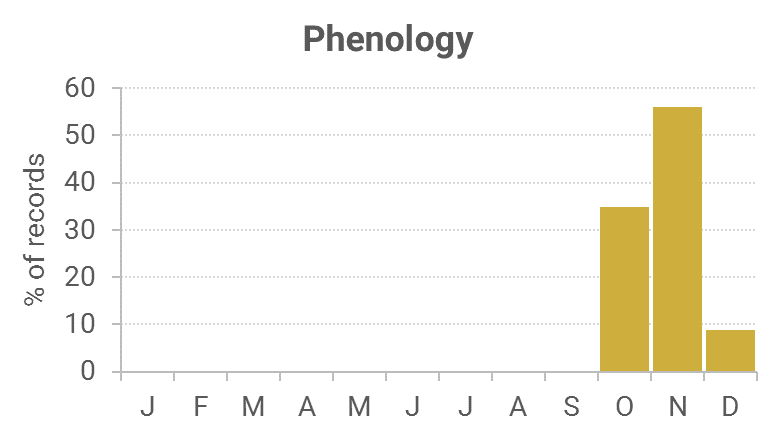See also Moth of the Week (10/11/2019)
Identification
Very distinctive with creamy white markings on a charcoal-coloured forewing.
Life cycle
One generation. Overwinters as an egg which hatches in April. Larvae are present April to June, feeding at night and hiding by day. Pupation taking place among plant debris or under bark.
Larval foodplants
Larvae feed on a range of broadleaved trees, including Oaks, Elms, Birches, hawthorns, Blackthorn and Sallows.
Habitat
Woodland, scrub, hedrerows and gardens.
History 1860-2010
Lennon (1863) had found it to be not common, but had seen it at Castledykes (VC72). W. Douglas Robinson (1870-71) had found the larvae on two small poplars in August. R. S. Gordon (1913) had found it was common at light at Corsemalzie (VC74) with ten on 8th December 1910. Earliest date was 30th October 1910.
Many records are from the Rothamsted stations that used to operate in each VC, with a few records from daytime observations and a few from traps operated on the warmer winter nights. MOGBI (1992) with their distribution map show records for all three counties.
Probably under recorded due to the late appearance date.

